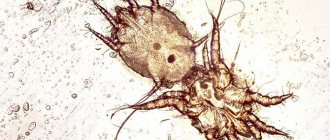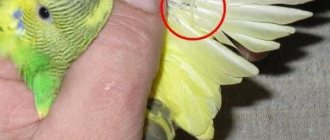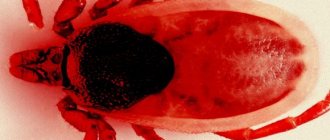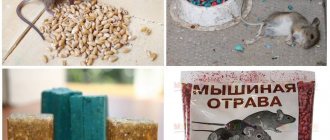Where do parasites come from in decorative rats?
Rat breeders often ask this question when they discover parasitic animals in their pet. The unpleasant sight and torment of the rodent force the owner to look for all possible ways to destroy these parasites. Even with careful care, the animal becomes infected, and the sources can be:
- fillers _ Hay and sawdust are habitats for lice eaters and ticks. If a person buys litter in dubious places and at too low a price, then there is a possibility of these parasites appearing in the house;
- contact with infected animals . Other pets that are infested with fleas or lice act as a dangerous source for the rat;
- external environment . The owner brings various infections from the street on his hands and clothes.
The precautions are as follows. Buy fillers only from trusted pet stores and carry out preventive maintenance regularly. Wash your hands and take off dirty clothes immediately after coming home.
Treatment of external parasites in rodents
If you suspect a rodent has been infected with any type of ectoparasite, consult a veterinarian. The doctor must examine the animal and advise how to treat it. The fact is that some medications are suitable for killing subcutaneous mites in rats, while others are used for fleas and lice eaters. Acaricidal preparations act on arthropods, and insecticides act on insects. However, there are complex medications that simultaneously act on fleas, lice, ticks and even helminths.
Parasites in rats are easily treatable. The main thing is to choose the right drug and calculate the dosage correctly.
List of medications for ectoparasites for rats based on selamectin or fipronil in the form of drops on the withers:
- Stronghold;
- Advocate;
- Frontline;
- Leopard;
- Fiprist;
- Delix-F;
- Dana.
When purchasing a drug for lice eaters and other parasites, you should give preference to medications that are intended for puppies and kittens. The fact is that veterinary pharmacies do not sell insecto-acaricides specifically for rats.
The dosage and treatment regimen should be announced by the doctor. If your pet is concerned about rat mites, your veterinarian may recommend an injection of Ivermectin. It is administered subcutaneously 3 times with an interval of 10-14 days.
In case of complications in the form of suppuration on the skin, the treatment regimen includes antiseptics, antibiotics and healing ointments. The rat should receive a diet rich in vitamins to strengthen its immunity. The sick rodent is isolated from other rats. The old bedding is thrown away, the cage and all equipment are disinfected.
Attention! If fleas or lice eaters are found on a rat, you will have to treat other pets as well, since there is a high probability that they brought the parasites into the house.
How to recognize the presence of parasites in a rat?
Ticks
It is impossible to recognize a tick on an animal with the naked eye. A scraping done by a veterinarian does not always show the true result. There are indirect signs: hair falls out, red wounds appear on the body. Ear mites are immediately visible . The owner observes tubercles along the edge of the ear. If you don't treat your pet, the ears will soon become corroded.
Important! You should regularly inspect the body and ears of a decorative rat. Trim the claws in a timely manner, otherwise the animal will cause serious injury to its delicate skin.
Treat the pet yourself or contact a veterinarian. In the first case, the following drugs will help:
- Stronghold drops. The composition is dripped onto the withers. Dosage - 0.01 ml per 100 g of rat weight. After the first application, significant improvements are observed;
- drops Lawyer. The substance is dripped onto the withers, the dosage is identical to the previous drug;
- Dironet Spot-on drops. Used when the animal is heavily infected;
- drops on the withers Parasiticide complex. One drop is enough to rid a rat of subcutaneous mites.
Attention! It is better to contact a veterinarian or ratologist. The specialist will recommend a drug that will help a specific breed of decorative rat.
Shampoos and brushing will not help get rid of ticks. Experts advise regularly changing the filler, cleaning and disinfecting the cage.
lice eaters
These are small red insects, with a body size of 1 mm. It is difficult to recognize lice eaters, but their eggs are noticeable. They resemble dandruff that has stuck to the fur. Symptoms: The rat is anxious, refuses to eat, behaves nervously and quickly loses weight.
Important! The parasitism of lice eaters is dangerous - the rat may die. Treatment should be started as quickly as possible, and at the first symptoms, immediately consult a veterinarian.
Washing or combing out infected fur will not help the animal. Based on reviews from rat breeders, the best drug for lice eaters is Neostomazan . This is an emulsion in glass or plastic ampoules of 2 ml.
The remaining solution is used to treat the cage and other accessories. Gradually, the pet will shed, and non-living lice eaters and larvae will fall off along with the fur.
Lice
These are dangerous insects with an elongated flat body. Parasites feed on blood. The decorative rat is constantly bothered by itching. Adults cannot be seen due to their too small size. Only eggs are recognized.
Symptoms: the animal is nervous, actively scratches its body, and does not react to others. Anemia, typhus and hemobartonellosis often develop.
Lice are destroyed by Stronghold, Frontline or Neostomazan. The remains of the drug are treated with the cage and accessories. Shampoos and combing will not help. It is recommended to exclude the use of sawdust as bedding and filler.
Basic medications for ticks, lice and helminths and methods of their use
The first drug is Neostomazan. Here are some tips for use:
- to treat one pet you will need 1/2 of the emulsion diluted in 200 ml of warm water;
- cover the rat with the composition using a cotton pad;
- wrap in a towel for 5 minutes;
- Wipe the animal dry and dry it with a hairdryer.
An effective and inexpensive drug gets rid of any parasites.
Attention! A decorative rat should not lick itself during the procedure. Otherwise, the product will lead to poisoning.
The second drug is Bars. Choose in the form of an aerosol, without containing permethrin. Fiproline should act as an active substance. The bottle is pointed at the rodent and pressed once. Repeat the procedure after 10 days to completely destroy the parasites.
The third drug is Parasiticide-complex. Used on the withers. If the rat is dewormed, the remedy is administered orally. Other substances are used in the absence of basic drugs.
Fleas
The most ancient and unpleasant parasites that suck the blood of the victim. Appear in the house from cats, dogs, wild rodents. After laying eggs, the animal is additionally exposed to larval bites.
Symptoms include anxiety in the pet. He scratches the skin, and the itchy spots turn into scabs. Anemia may develop.
Treatment of a decorative rat for fleas consists of:
- in the wash with a special shampoo for kittens . For example, Bars, Celandine. Apply the product to damp fur and leave for 10 minutes. Then the shampoo is carefully washed off and the pet is dried. Repeat the procedure after 2 weeks;
- in the use of drops on the withers - Frontline, Neostomazan. One drop is enough to kill all fleas. Repeat after 3 weeks;
- combing with a fine comb. It is better to carry out the procedure on wet fur. Collect adult specimens in a container with a tight lid and then dispose of them.
Treat the cage with a disinfectant. Change the bedding. Check other pets for parasites.
Have you found fleas on your pet?
Bedbugs
They live in every corner of the house: under baseboards, on linen, in carpets and so on. Causes severe itching in decorative rats. Bedbugs attack your pet when there is not enough food or there is no person nearby. They are considered the most dangerous insects that can cause blood poisoning.
Important! These parasites are not noticeable. Only a veterinarian can help determine the exact cause of the animal’s anxiety. The owner does not know which parasite attacked the pet.
It is not recommended to delay treatment of a decorative rat. Negligence will lead to a more difficult fight against bedbugs, and in the worst case, the death of the rodent.
The drug Neostomazan will help destroy bedbugs. Treat rooms in the house with powders, insecticides or professional products. This will rid the room of small domestic parasites. Disinfect the cage, but it is better to buy new accessories.
Major rat parasites
In decorative rats you can find different types of ectoparasites, all of which cause unbearable itching and anxiety to the animal.
lice eaters
Red wingless small insects no larger than 1 mm in size with an oblong elongated body covered with bristles, shaped like cat fleas. In light-colored rodents, adult insects can easily be detected in the fur. Rat pests feed on particles of the epidermis and blood of the rodent.
Infection of domestic rats with lice eaters is accompanied by severe debilitating itching in the rodent; the domestic rat becomes very restless, twitchy, often itches intensely, refuses to eat, and progressive exhaustion is observed. There are numerous wounds, scratches, and bruises on the pet’s body, accompanied by severe swelling and inflammatory processes.
Lice eaters in rats multiply rapidly; an adult female lays more than a hundred nit eggs, which stick to the animal’s fur. The owner can detect light shiny inclusions on the lower back and near the tail, fixed in the pet's hair and reminiscent of ordinary dandruff. It is almost impossible to remove nits from a rat's fur, only by completely removing the animal's hair. A huge number of larvae emerge from the eggs, which within a month become adult, sexually mature individuals.
The parasitism of lice eaters in rats is dangerous due to the death of the pet, so treatment should begin at the first characteristic symptoms of infection.
Lice
Lice in rats cause severe itching and anxiety; these parasitic insects feed only on the blood of a domestic rat; per day, one louse attaches itself more than 10 times to the animal’s skin. Adults can only be seen under a microscope; the body size of the parasites is no more than 0.5 mm.
Rat lice are small red insects with an elongated body, at the head end of which there are hooks for holding on the animal’s body and two sharp stilettos for piercing the skin. The louse cuts through the skin, injects substances that prevent the rodent's blood from clotting, and attaches itself to the animal's body.
Reproduction of lice occurs in the same way as in lice, with the deposition of nit eggs and the hatching of nymphs, which turn into sexually mature individuals. White shiny nits of lice can be found on the fur of a rat; parasitism is accompanied by severe nervousness of the animal, active itching, lethargy and apathy of the pet; the development of anemia, typhus and hemobartonellosis in the rat is possible.
Fleas
Rat fleas are unpleasant blood-sucking insects of a red-brown color with a characteristic body flattened on both sides, the size of the insect is 2-5 mm. The flea is capable of jumping long distances and clinging to the host's fur with tenacious claws, and is capable of migrating between cats, dogs and rats.
When infected, pets constantly scratch itchy areas, become restless, and may develop anemia. Dried burgundy crusts can be found on the animal's body - flea secretions; when bathing a rat, they turn the water pink.
Mites are very common in rats; there are several types of parasites that live on the skin and in the epidermal layer. The rat tick is red-brown in color, 0.1-1 mm in size, has an oblong flat body, feeds on the blood of an animal and carries various serious diseases. With a lack of nutrition, the tick is capable of attacking humans.
IMPORTANT!!! Rat mites are dangerous to humans! People, especially children, have a hard time with eczematous dermatitis, which develops as a result of parasitism by these insects. Ticks infect people with typhus and murine typhus, tularemia, plague, rickettsial infections and Q fever.
Subcutaneous mites live in the upper layer of the epidermis under the skin of a rodent. It is impossible to visually detect these mites; the diagnosis is made only on the basis of examination of skin scrapings under a microscope.
Parasitism of ticks on the body of a rat is manifested by characteristic symptoms: hair loss and the formation of multiple swollen red wounds on the neck, head, spine and shoulders of the rodent.
Ear mites primarily attack the delicate skin of the ear, pinna and nose, which is manifested by the appearance of yellow or red growths on the ears, nose, limbs and genitals.
Bedbugs
Ordinary bed bugs can also drink blood from decorative rats, causing severe itching, scratching, anemia, and infection with blood parasites. Bedbugs attack domestic rodents during periods of food shortage or the absence of a person nearby as a food source.
How to prevent parasites from appearing in a rat?
The best treatment for a decorative rat against all kinds of parasites will be timely prevention. Insects cause discomfort, and drugs are toxic and dangerous for the animal, no matter what the advertising says.
Here are some rules:
- keep the cage clean, regularly change the water in the drinking bowl;
- feed your pet correctly;
- ventilate the room;
- buy filler only in a specialized store;
- wash your hands and change clothes before interacting with an animal.
Pay more attention to the behavior of the decorative rat. The first signs of dangerous parasites often turn into serious illnesses for your pet.
Attention! It is strictly prohibited to purchase fillers and food for rodents in online stores. Often the owner of a decorative rat was sold products of the worst quality. You should take care of your pet and trust only trusted stores.
Prevention of infection of decorative rats with parasites
In addition to the basic rules, owners of decorative rats should closely monitor other pets. If a cat or dog prefers to spend a lot of time outside, then they are thoroughly washed after a walk.
Attention! For better prevention, rat breeders observe a two-week quarantine for newly acquired rats. The animals are kept in another cage, shown to a doctor, and treated with drugs.
Keep the house clean. The main cause of the appearance of bedbugs, ticks, and lice is the person himself. Some owners call specialists every month to sanitize their premises.
If a rat breeder keeps several individuals, then each rat is processed. Otherwise, pests will be able to attack your pet’s clean coat again. The bedding is changed once a week. Wooden utensils are thrown away: they can become a breeding ground for parasites.











